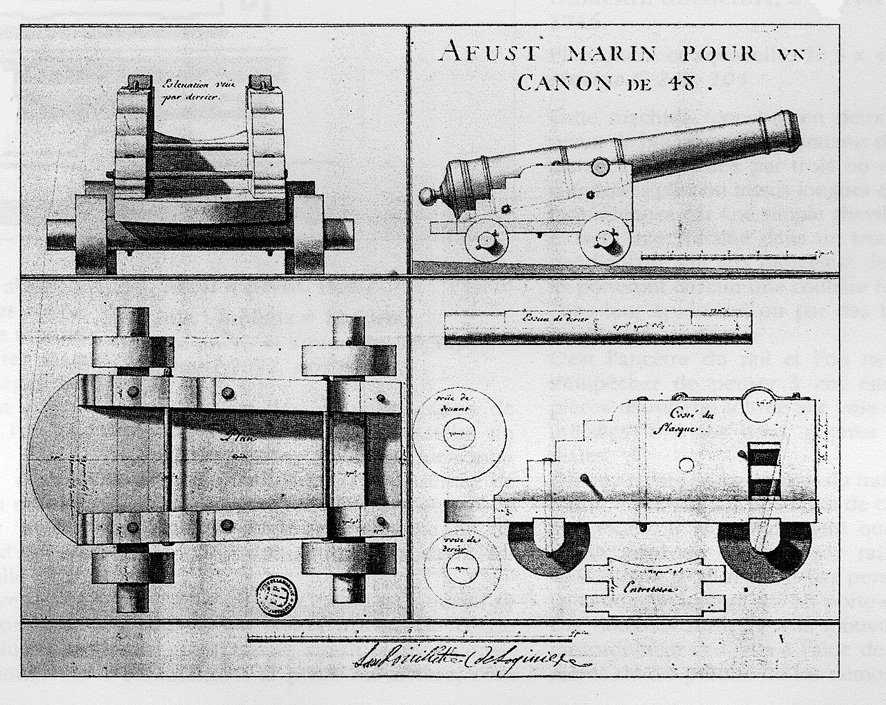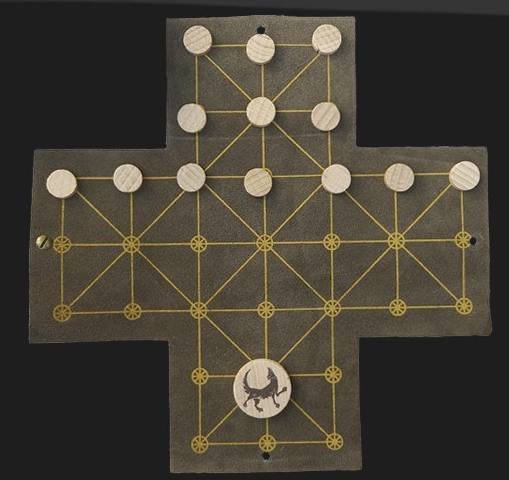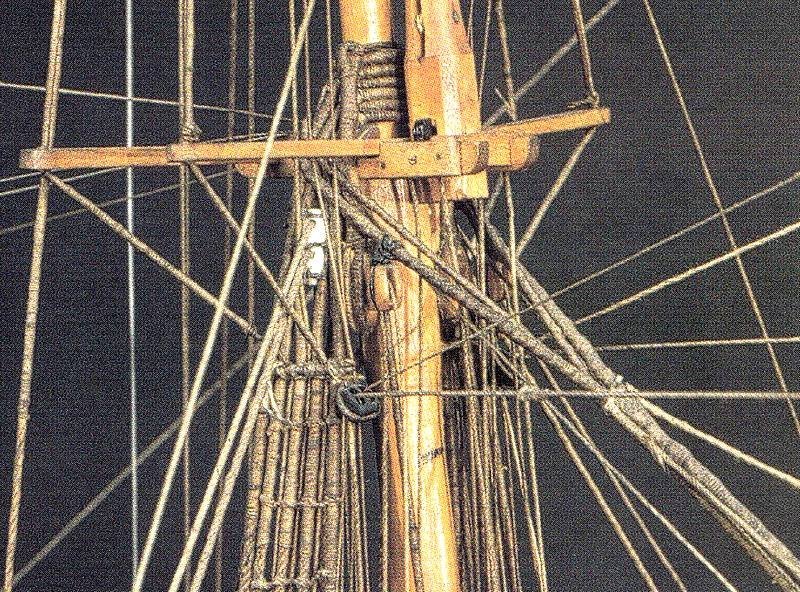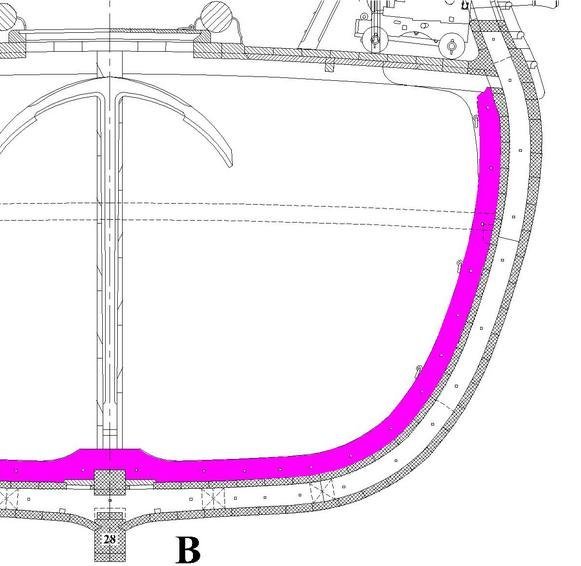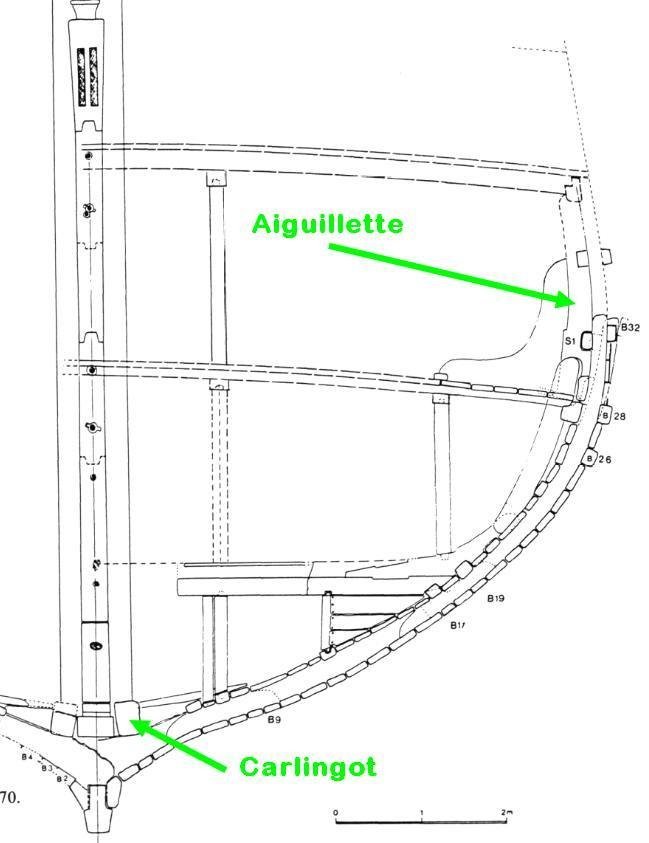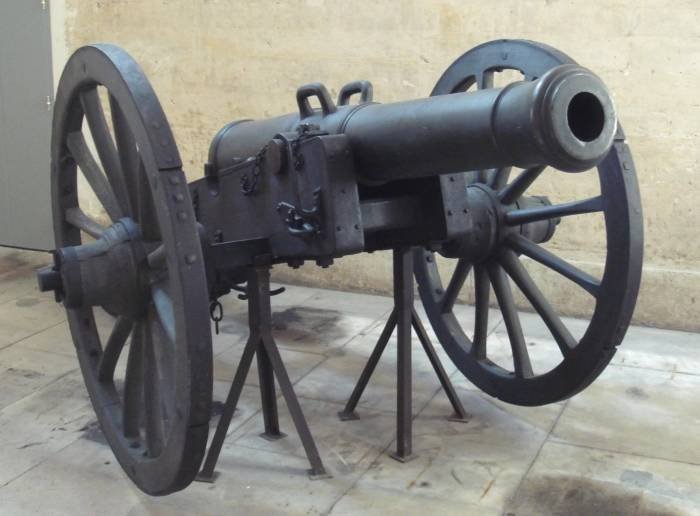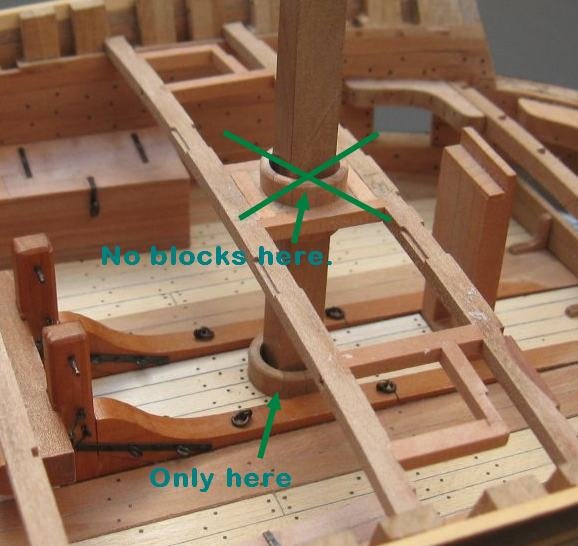-
Posts
187 -
Joined
-
Last visited
Content Type
Profiles
Forums
Gallery
Events
Everything posted by G. Delacroix
-
Hello The most common howitzer, that of 22 cm of bore, fires shells of 25,7 kg (shell + powder included in the shell which is a hollow ball) thanks to a load of 3,5 kg of powder (large load) or 2 Kg (small load) according to the distance of the goal. We are far from the 36pdr guns which, with 18 kg cannonballs, require charges of one third, i.e. 6 kg of powder. The result is also incomparable, the full ball at best crosses the wall of the ship whereas the shell crosses then explodes causing terrible damages in the batteries.
-
Hello, Napoleon had 48pdr cannons sunk in Antwerp but these cannons did not fire traditional cannonballs but hollow explosive cannonballs that we will call "shells". At that time, these shells or bombs were fired with a mortar and therefore had a curved trajectory. These guns fired these shells in a straight line, something that was not practiced yet. JH Paixhans invented the gun adapted to launch these shells and standardized the calibers in the navy. The cannons used were called "canon-obusiers" (howitzers) and from 1827 onwards they were used on ships, at first with some reluctance (only 8 on a 100-gun ship) and then in a general way. The howitzers, by their efficiency, will made the wooden hulls disappear in favor of the first ironclads. The largest carronades in the French Navy were 36pdr. GD
-
Hello, As an indication, on this bad picture, here is how the inner rings of the lids are used. An handspike is placed across the porthole and then a rope is tightly clamped between the rings and the handspike to close the porthole to the sea. This is the French method but I imagine the English did the same. GD
-
The origin of the name and this instrument is much older than Louis Renard. It comes from a board game, "The fox and his hens", where, on a grid board, pawns represent the hens which must escape from the fox. The method is similar to the game "Solitaire" with pawns to move on the board. The traverse-board (renard) uses the same principle by adapting the board, the pawns are placed to trace the route of the ship.
-
Hello, This way of working the upper end of the stays is correct as it is quoted in Costé's treatise which serves as your reference. It should be noted, however, that Costé specifies that coherence is required and if the upper stays use this type of mooring, it should be practised for all the stays. For the mooring at the bottom, depending on the stay, they are fixed either on the bars as you have shown, or on the stay next to it after passing through a thimble or a block (depending on their diameter) fitted on a bolt behind the cap or even more simply by tying it to this bolt. Here is the mizzen top stay of La Créole where you can see how it is worked with two branches, i.e. without mouse.
-
Hello, This drawing comes from the excavation report of the Villefranche ship, which can be consulted here: https://www.persee.fr/doc/nauti_0154-1854_1989_mon_9_1 On page 93. @Sandra: traduire est une chose, connaître en est une autre, à chacun son domaine (Translating is one thing, knowing is another, to each his own ) GD
-
Hello, Sorry, I thought I posted in English. The riders are internal reinforcements comparable to frames but placed on the ceiling. Example of a rider on Le Gros-Ventre:
-
Bonjour, Les « carlingots » sont deux pièces placées parallèlement et contre la quille afin de la renforcer latéralement. Les "aiguillettes" sont la pièce supérieure dans la partie supérieure des cavaliers (qui sur ce navire ont une forme particulière). GD
-
Hello, In the "Manuel du gréement" by F. A Costé which dates from 1828, the author gives the method to calculate the dimensions of the rig. The result of this calculation gives the following diameters: Fore topmast stay: 43 mm Fore topgallant stay: 26 mm. This "manuel" is here : https://gallica.bnf.fr/ark:/12148/bpt6k9768285f?rk=42918;4 I am still in awe of this beautiful model. GD
-
Hello, You may not know it, but I am the author of the monograph "La Fleur de Lis", a work that required more than 15 years of in-depth studies on the world of Mediterranean galleys and mainly those of the French king Louis XIV. What is represented in this video is not a scenario intended to entertain Internet users, but everything you see is the conclusion of a multitude of research and reading of period documents, manuscripts, drawings and engravings by authors contemporary with the galleys. These documents are an undeniable source of knowledge about their construction and use. This video was shown at the Musée de la Marine in Paris and was unanimously approved by my few fellow researchers who have worked on galleys (which are unfortunately becoming increasingly rare). I am not familiar with the books by B.Landström, as I only use period sources, but if this gentleman indicates the position of the anchors in this way for Mediterranean galleys , he is deeply mistaken. This error comes from the restoration of museum models which are mostly worked on by people who do not have the culture of galleys and in particular the model of La Réale in the Paris Museum which, by the way, is not a real Réale, just count the benches. I could talk to you about the history of this model, which is highly debatable but widely used as a reference by kit manufacturers. From a purely technical point of view, the small davit is not strong enough to lift the anchor and its orientation is not aligned with the galley slaves who perform the manoeuvre. This manoeuvre is perfectly described in an article by the "comite" Masse in his manuscript treatise on galleys (# 1695). On the other hand, it is nailed to a platform that is of such light construction that it would not withstand the pull of the anchor, which weighs nearly 2000 pounds on a large galley like a Réale. I am not sure that a commercial model ship company like Corel is a reliable reference, they rely on existing publications with the risk of coming across incorrect information. Regards, Gérard Delacroix
- 222 replies
-
- reale de france
- heller
-
(and 1 more)
Tagged with:
-
Hello, The installation of the anchor is not correct, the davit would never support the weight of the anchor, it is intended to raise the anchor buoy. See this video : https://www.youtube.com/watch?v=YYxrbtuyNG0 GD
- 222 replies
-
- reale de france
- heller
-
(and 1 more)
Tagged with:
-
Hello, The original 1:24 ANCRE plans are available but have you used them or are you working with direct or enlarged copies? The ANCRE plans are directly generated at the right scale without distortion at this point and there is no optical enlargement. That said, your work is of a very high quality, clear and, I suppose, precise. Congratulations to you. Gérard Delacroix
-
Hello, It is probably a printing problem because the "exploded" part is drawn from the "assembled" part, there is no difference in the AutoCad file (I just checked). It is possible that the printing method has deformed the print although it comes from a pdf file dimensionally reliable. Sorry for this inconvenience that I hope is unique. Gérard Delacroix
-

Lateen halliard blocks - attached to mast?
G. Delacroix replied to tkay11's topic in Masting, rigging and sails
Hello, This large block is attached to the deck by ropes. The ring-bolt for this ropes are attached on the rear beam of the mast. GD -
It is difficult to answer, but I think this provision dates back to the mid-seventeenth century,
- 244 replies
-
- heller
- soleil royal
-
(and 1 more)
Tagged with:
-
Hello, This piece is called in French "mouchoir" (handkerchief), it is used to prevent the shock of the waves from disturbing the front pieces. You can also find it in many ANCRE monographs (including mine: Fleuron, Amarante, Egyptienne, etc.). GD
- 244 replies
-
- heller
- soleil royal
-
(and 1 more)
Tagged with:
-
- 589 replies
-
- le gros ventre
- cargo
-
(and 1 more)
Tagged with:
About us
Modelshipworld - Advancing Ship Modeling through Research
SSL Secured
Your security is important for us so this Website is SSL-Secured
NRG Mailing Address
Nautical Research Guild
237 South Lincoln Street
Westmont IL, 60559-1917
Model Ship World ® and the MSW logo are Registered Trademarks, and belong to the Nautical Research Guild (United States Patent and Trademark Office: No. 6,929,264 & No. 6,929,274, registered Dec. 20, 2022)
Helpful Links
About the NRG
If you enjoy building ship models that are historically accurate as well as beautiful, then The Nautical Research Guild (NRG) is just right for you.
The Guild is a non-profit educational organization whose mission is to “Advance Ship Modeling Through Research”. We provide support to our members in their efforts to raise the quality of their model ships.
The Nautical Research Guild has published our world-renowned quarterly magazine, The Nautical Research Journal, since 1955. The pages of the Journal are full of articles by accomplished ship modelers who show you how they create those exquisite details on their models, and by maritime historians who show you the correct details to build. The Journal is available in both print and digital editions. Go to the NRG web site (www.thenrg.org) to download a complimentary digital copy of the Journal. The NRG also publishes plan sets, books and compilations of back issues of the Journal and the former Ships in Scale and Model Ship Builder magazines.




